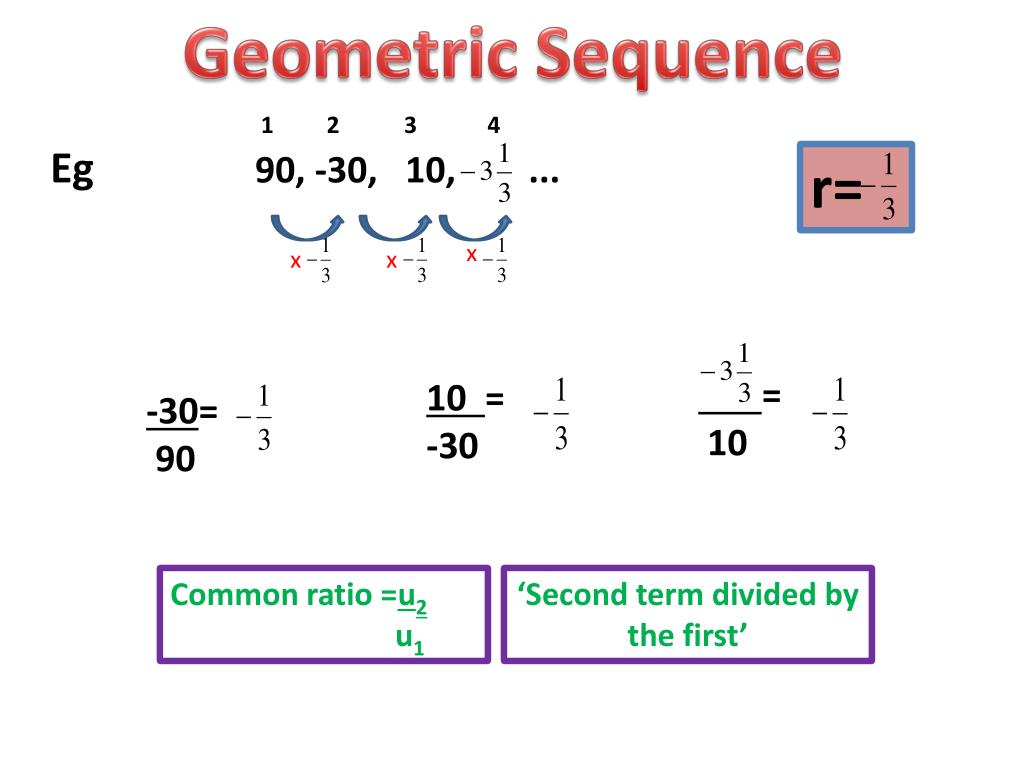
Notice that in the first example, the common. #1, 2, 4, 8, \cdots# - the common ratio is 2. A geometric sequence is an ordered set, usually of numbers, such that there is a common ratio between terms. Even if you do, you can think for yourself. To recall, a geometric sequence or a geometric progression is a sequence of numbers where each term after the first is found by multiplying the previous one by a fixed. But thinking about that argument is futile, as you would never, ever encounter a sequence such as that in questions. The geometric sequence formula refers to determining the n th term of a geometric sequence.

The "common ratio" can be anything, but it has been widely argued without a proper consensus that a sequence with a common ratio 0 or 1 should not be called geometric. The number being multiplied each time is constant. But you can probably already tell why you get the same number - it is because you have been multiplying the same number. Geometric sequences follow a pattern of multiplying a fixed amount (not zero) from one term to the next. If you also think about it, the common ratio is what you get when you divide a term by its predecessor. This means that you just have to check if there is a number being multiplied between successive terms.

That is to say, a number is being multiplied to get each successive term, and this "number" is nothing but the common ratio.

That lies in its very definition: there is a common ratio between successive terms of the geometric sequence. Remember, the common ratio is just the number we multiply by to get to the next term in a geometric sequence.


 0 kommentar(er)
0 kommentar(er)
